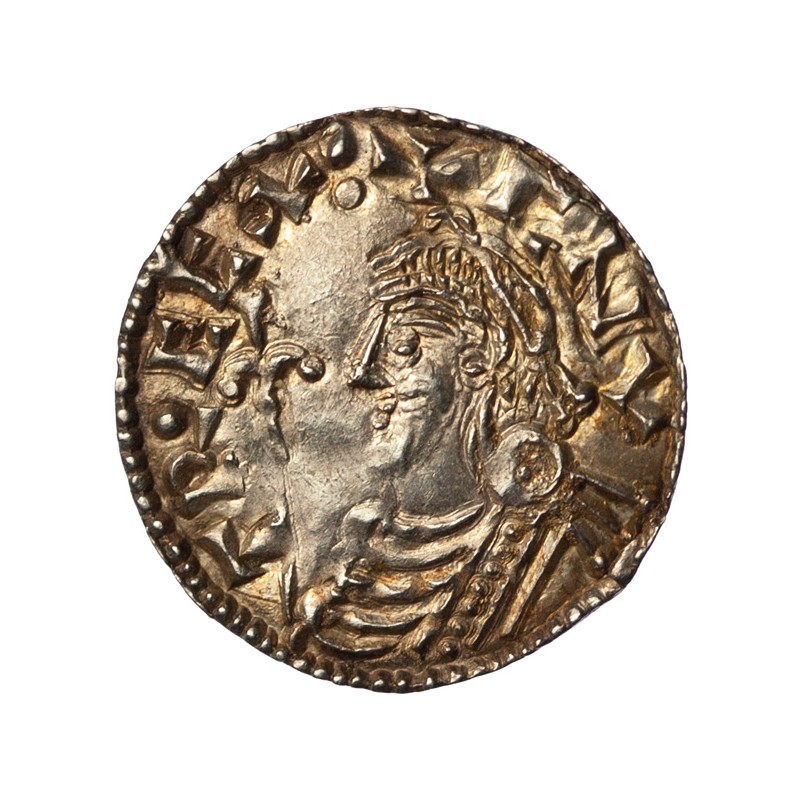





Cnut Silver Penny
Short Cross
Matathan on Lincoln
1.09g 17.1mm
Spink - 1159
North - 790
Obverse:
CNVT R.ECX. Diademed bust left with sceptre.
Reverse:
MAÐAN BALVC ON LI. Voided short cross with pellet centre.
Obverse slightly double struck otherwise extremely fine. A rare reverse die, with the double moneyer's name. Mossop dies Ba. Same die pair as SCBI 1 - Fitzwilliam Museum - Number 787.
Ex M. Vosper
“The coincidence of the decline in the use of symbols with the gradual extension of the use of double names on the coins, affords an interesting and convincing commentary on the meaning of these two features of our coinage, and the conclusion is irresistible that the insertion of the composite names took the place of, and proves the reason for, the symbols, namely, that they were intended to differentiate between the moneyers...
A good example of the transition from the use of symbols to that of double names is preserved to us on some coins of Cnut of the Lincoln mint inscribed with the name of Matathan. Of the first real type of this monarch, Hildebrand E, we have specimens bearing the ordinary name alone, or modified with symbols -a cross or a pellet in the field of the reverse. In the next type, Hildebrand G. occur the double name, Matathan Balluc, alone, and the ordinary name and a symbol - a cross in the field of the obverse; whilst in the following type, Hildebrand H, the use of the symbol is finally dropped, leaving only the double name for distinguishing purposes.”
H. A. Parsons, (1917) ‘Symbols and double names on late Saxon coins’ British Numismatic Journal, Volume 13 - Pg 16.
"Hildebrand, whose experience of English coins was drawn mainly from the late Anglo-Saxon reformed series which appears in the Swedish Viking, age finds, accepted the second name without hesitation as a byname... in a brief discussion of this feature he gives his reasons: the first name is always the more generally used name, and the coins which have this feature come from the more prolific mints where it is more likely that two moneyers could have the same name. The editors of BMC took the contrary view. They held that the double names indicate a joint responsibility taken for the coin in some way by two moneyers.
Balluc is the subject of an unresolved controversy. Tengvik [Author of 'Old English Bynames'] takes it at face valuet offering equally dubious epithets as evidence that mere delicacy would not have prevented the use of the OE noun as a byname. Other commentators have viewed the Irish derivation of the forename Matathan as an indication that the byname too is Irish, the equivalent of 'the young one, Matathan junior'"
V. Smart (1981) 'Moneyers of the Late Anglo-Saxon Coinage 1016-1042' Thesis submitted to the University of Nottingham. Pg 24-28.
Data sheet
Specific References